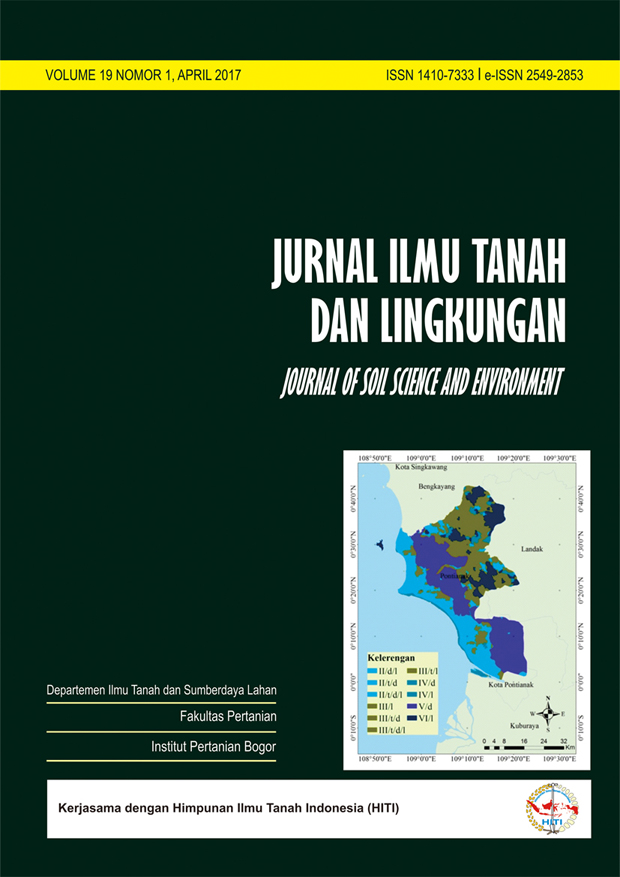Remote Sensing Application for Regional Rice Production Estimation (A Case Study in Bekasi District)
Pengembangan Penggunaan Penginderaan Jauh untuk Estimasi Produksi Padi (Studi Kasus Kabupaten Bekasi)
Abstract
The utilization of remote sensing imagery such as Landsat-8 (OLI) to estimate harvested area and yield using the Enhanced Vegetation Index (EVI) parameter is a new approach to estimate regional rice production. Based on the analysis of the satellite imagery acquisition during May-August 2015, the estimation of rice harvested area in Bekasi District during July-October 2015 is 15.86 thousand ha or 7.74 thousand ha (32.79%) lower than BPS figures in the same period. Based on the relationship between yield (from the crop cutting survey, BPS) and EVI maximum, the equation model for rice yield estimation is Yield (qu ha-1) = 36.818 + 44.965 EVImax. R2 value is 0.809. Based on the model, the estimation of rice yield in Bekasi District during July-October 2015 is 47.40 qu ha-1. Compared to the data published by BPS, the result is 12.66 qu ha-1 lower than the yield figure in sub round I 2015, 6.77 qu ha-1 lower than the one in sub round II 2015, 10.15 qu ha-1 lower than the one sub round III 2015, and 6.62 qu ha-1 lower than the one in January-December 2015. Meanwhile, based on satellite imagery analysis, the estimation of rice production in the period of July-October 2015 is 75.16 thousand tons of GKG or 55.35 thousand tons of GKG (42.41%) lower than BPS figures during the same period.
Keywords: Enhanced Vegetation Index, Landsat-8 (OLI), rice production estimation
Downloads
Department of Soil Science and Land Resources Departemen Ilmu Tanah dan Sumberdaya Lahan, Faculty of Agriculture Fakultas Pertanian, IPB University



















